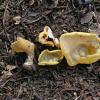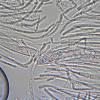
09-12-2025 12:06
 Andgelo Mombert
Andgelo Mombert
Bonjour,Je recherche l'article concernant Hypobryo

07-12-2025 16:07
Arnold BüschlenHallo, ich habe in einer Moos-Aufsammlung (epiphy

08-12-2025 21:04
Mark Stevens"Hello everyone,I'm relatively new to microscopy (

08-12-2025 18:59
 Lothar Krieglsteiner
Lothar Krieglsteiner
.. found by a seminar-participant, I do not know t

08-12-2025 17:37
 Lothar Krieglsteiner
Lothar Krieglsteiner
20.6.25, on branch of Abies infected and thickened

16-03-2014 22:00
Hello,I found this species a few months ago but ha

08-12-2025 13:39
Thomas Læssøehttps://svampe.databasen.org/observations/10572899
Flavoscypha subconcinna?
Luis Ballester,
14-08-2013 21:45
 Hola otra vez.
Hola otra vez.J'ai cette collection que je pense qui est Flavoscypha phlebophora
SP 11-12 x 5-5,3 µm
Je sais que Nicolas van Vooren travaille le genre Otidea.
Nicolas VAN VOOREN,
15-08-2013 08:12

Re : Flavoscypha phlebophora
Bonjour.
Il s'agit probablement d'une espèce du sous-genre Flavoscypha, mais je ne peux pas proposer de nom uniquement sur les informations que tu donnes.
Il s'agit probablement d'une espèce du sous-genre Flavoscypha, mais je ne peux pas proposer de nom uniquement sur les informations que tu donnes.
Ibai Olariaga Ibarguren,
15-08-2013 08:58
Re : Flavoscypha phlebophora
Hi there,
I agree with Nicolas that it belongs to the Flavoscypha group and that we cannot know what species it is without further information. Is the apothecial base smooth or is it furnished with ribbs or veins? Do you have photos of spores? ??Any information about the ecology?
If the spores measures are accurate, they would exclude O. concinna, which has broader spores. Otidea phlebophora has apothecia with striking anastomosing ribs-veins at the base, and the photo does not look like so. It might be O. subconcinna Harmaja nom. prov., which has narrow spores compared to O. concinna, and some apothecia present small ribbs at the base.
Cheers,
Ibai.
Ibai Olariaga Ibarguren,
15-08-2013 09:34
Re : Flavoscypha phlebophora
Sorry, I missed the micro photo. They do not like those of O. concinna indeed.
Cheers,
Ibai.
Luis Ballester,
15-08-2013 10:51

Re : Flavoscypha phlebophora
Hola otra vez
The collection is in a ravine in the Moncayo, were hidden under the leaves, no looming overhead. The dominant trees were Quercus pyrenaica, Crataegus monogyna and Rhamnus frangula.
The "cup" of the largest specimen reached 25 mm in diameter. The base of the apothecium has veins or ribs rudimentary underdeveloped.
Sporal measures not only correspond to the picture, I measured 16 spores in various parts but only in the largest specimen. If you want I can take more photos of spores.
I have saved exsicata, so if you think it's interesting and you want them, I can send you dried sample for study.
Finally, is official the inclusion of Flavoscypha within the genus Otidea? I mean this to change the thread title
La colección es de un barranco en el Moncayo, estaban escondidas bajo la hojarasca, ninguna asomaba por encima. Los árboles predominantes eran Quercus pyrenaica, Crataegus monogyna y Rhamnus frangula.
La copa del ejemplar mayor alcanzaba los 25 mm de diámetro. La base del apotecio presenta venas o costillas rudimentarias, poco desarrolladas.
Las medidas esporales no corresponden solo a las de la foto, estuve midiendo esporas de diversas partes aunque solo medí 16 esporas todas ellas del ejemplar más grande. Si queréis puedo hacer más fotos de esporas.
Tengo guardada exsicata, así que si os parece interesante puedo enviaros muestra seca para su estudio.
Finalmente, ¿es oficial la inclusión de Flavoscypha dentro del género Otidea? Lo digo por cambiar el título del hilo.
The collection is in a ravine in the Moncayo, were hidden under the leaves, no looming overhead. The dominant trees were Quercus pyrenaica, Crataegus monogyna and Rhamnus frangula.
The "cup" of the largest specimen reached 25 mm in diameter. The base of the apothecium has veins or ribs rudimentary underdeveloped.
Sporal measures not only correspond to the picture, I measured 16 spores in various parts but only in the largest specimen. If you want I can take more photos of spores.
I have saved exsicata, so if you think it's interesting and you want them, I can send you dried sample for study.
Finally, is official the inclusion of Flavoscypha within the genus Otidea? I mean this to change the thread title
La colección es de un barranco en el Moncayo, estaban escondidas bajo la hojarasca, ninguna asomaba por encima. Los árboles predominantes eran Quercus pyrenaica, Crataegus monogyna y Rhamnus frangula.
La copa del ejemplar mayor alcanzaba los 25 mm de diámetro. La base del apotecio presenta venas o costillas rudimentarias, poco desarrolladas.
Las medidas esporales no corresponden solo a las de la foto, estuve midiendo esporas de diversas partes aunque solo medí 16 esporas todas ellas del ejemplar más grande. Si queréis puedo hacer más fotos de esporas.
Tengo guardada exsicata, así que si os parece interesante puedo enviaros muestra seca para su estudio.
Finalmente, ¿es oficial la inclusión de Flavoscypha dentro del género Otidea? Lo digo por cambiar el título del hilo.
Ibai Olariaga Ibarguren,
16-08-2013 09:54
Re : Flavoscypha phlebophora
Hi again,
Thank you for the information. It sounds like O. subconcinna in my opinion, but I would be pleased to check the dried collection for a confirmation. I send you my address in private.
The type of Flavoscypha is Flavoscypha phlebophora, which nests in Otidea. The generic name to be used is Otidea in opinion, though sometimes we use Flavoscypha to refer to the group of species around O. phlebophora, concinna, etc.
Cheers,
Ibai.


